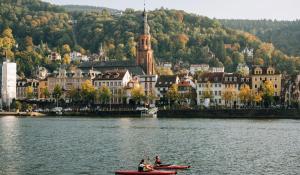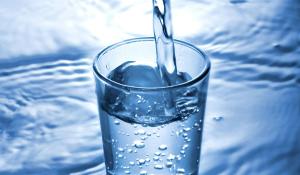
Natural gas is marketed as a clean energy source, but the reality is very different than the marketing. Natural gas is a highly polluting fossil fuel.
The impacts of natural gas include:
Climate change
The burning of fossil fuels releases carbon dioxide into the atmosphere, increasing CO2 levels, trapping heat, and contributing to global climate change.
- While natural gas is a cleaner burning resource than coal and liquid petroleum, it still emits a large amount of carbon into the atmosphere in the form of both CO2 and methane.
- CO2 is released during combustion, the process used to generate electricity.
- Methane is leaked in large quantities during extraction and transport of natural gas. Methane is a greenhouse gas that is about is about 87 time more potent than CO2 over a 20 year period (1).
- Studies show that global methane emissions have spiked dramatically since 2002. This is mostly due to the boom in natural gas extraction in the U.S. Leaked methane cancels out any reduction in CO2 emissions brought about by replacing coal with natural gas (1,2).
Air pollution
Air pollution is another side-effect of fossil fuel use. Air pollution is generally more regional than the effects of carbon dioxide, and can have devastating impacts on local populations and ecosystems.
- When natural gas leaks at extraction sites, pollutants such as volatile organic compounds (VOCs) are emitted to the atmosphere. VOCs, like trimethylbenzenes, xylenes, and aliphatic hydrocarbons react to form ground-level ozone, also known as smog. Smog can cause a variety of respiratory and cardiovascular effects and is especially dangerous to the elderly, young children, and people with asthma (3,4).
- Diesel fumes from the operation of trucks and machinery and gas leaks on drill sites pose a hazard to workers and nearby residents. People who live near areas of high oil and gas activity have been found to be at greater risk for chronic illness and cancer (5).
Water pollution
Like air pollution, water pollution is another more localized effect of fossil fuel use. Water is usually polluted during the process of extraction or in the handling of waste products. Water pollution can also have devastating impacts on human health the the environment.
- Hydraulic fracturing, also known as fracking, is a process by which natural gas is extracted from wells. Fracking is a dangerous practice for a number of reasons:
- Depending on location and well-type, fracking can use between 1.5 and 15.8 million gallons of water per well (6).
- Wastewater from these wells is often disposed of by injecting it deep underground into what are called Class II injection wells. Evidence suggests that these wells can cause earthquakes in the surrounding area. This not only puts people and buildings at risk, but it also increases the potential for groundwater contamination with wastewater (7,8)
- Accidents or poorly built wells can lead to contamination of groundwater by additives in fracking fluid (9). These additives can contain dangerous chemicals such as benzene and lead, which are toxic to humans (9,10).
- Extraction companies are not required to disclose all the components of fracking fluid. Many components are considered “trade secrets” and are never reported to regulatory agencies (10).
- Naturally occurring radioactive materials often come to the surface where they can build up in wastewater pipes. This can lead to maintenance workers being exposed to higher than normal levels of radiation (11).
(1) "Overview of Greenhouse Gases." EPA. Environmental Protection Agency. Web. 23 Aug. 2016.
(2) Turner, A. J., D. J. Jacob, J. Benmergui, S. C. Wofsy, J. D. Maasakkers, A. Butz, O. Hasekamp, and S. C. Biraud. "A Large Increase in U.S. Methane Emissions over the past Decade Inferred from Satellite Data and Surface Observations." Geophysical Research Letters 43.5 (2016): 2218-224
(3) “Health Effects of Ozone Pollution.” EPA.gov. Environmental Protection Agency. Web. 23 Aug. 2016
(4) "Health Effects of Air Pollution". CalEPA.gov. California Environmental Protection Agency, Air Resources Board. Web. 23 Aug. 2016
(5) Mckenzie, Lisa M., Roxana Z. Witter, Lee S. Newman, and John L. Adgate. "Human health risk assessment of air emissions from development of unconventional natural gas resources." Science of the Total Environment. (2012)
(6) Haines, S.S. "Methodology for assessing quantities of water and proppant injection, and water production associated with development of continuous petroleum accumulations." USGS. U.S. Geological Survey (2015): 1117-18
(7) Ellsworth, W. L. "Injection-Induced Earthquakes." Science 341.6142 (2013): 1225942.
(8). "Minimizing and Managing Potential Impacts of Injection-Induced Seismicity from Class II Disposal Wells: Practical Approaches, EPA.gov. U.S. Environmental Protection Agency. (2015)
(9)"Assessment of the Potential Impacts of Hydraulic Fracturing for Oil and Gas on Drinking Water Resources" EPA.gov. U.S. Environmental Protection Agency (2015)
(10) "Chemicals Used in Hydraulic Fracturing." U.S. House of Representatives, Committee on Energy and Commerce (2011)
(11) "TENORM: Oil and Gas Production Wastes." EPA.gov. U.S. Environmental Protection Agency. Web. 23 Aug. 2016.






